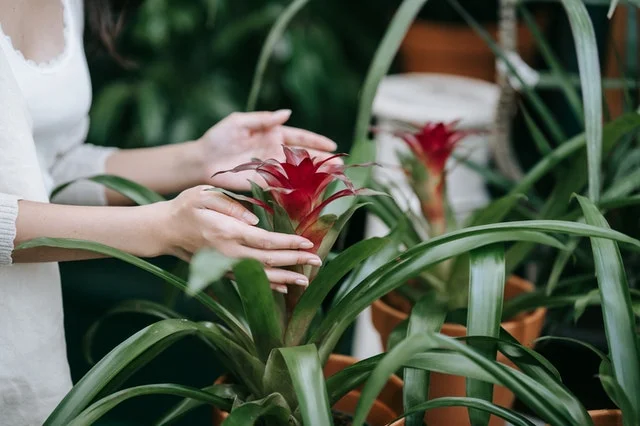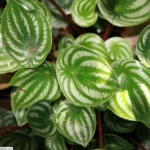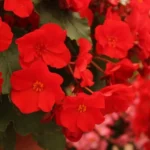Table of Contents
How to Care for Bromeliad Pups
Bromeliads are often one-time blooming plants. Eventually, the beautiful bright color will fade, but the good news is that these monocots provide the opportunity for propagation through cutting bromeliad pups, also called puppies.
These offspring are replications of the mother that can be planted to develop into mature monocots. Often, it is possible to get numerous pups from one mother.
Pups may develop at any time of the mother bromeliad, but it usually occurs after the plant has bloomed. When a plant has matured, it stops growing new leaves but will start producing the pups – the next generation of bromeliads.
Each puppy it produces will not be in bloom at the early stages but will look like a cup-shaped offset forming and growing upwards. Once a puppy is at a suitable size, it can then be harvested and planted.
Caring for the bromeliad offspring can be fun and rewarding. They have some needs to be fulfilled to develop into healthy, vigorous plants, but the result is well worth the effort.
Caring for these plants
Like other plants, pups require a certain amount of light and moisture, as well as specific kinds of soils and fertilizers. However, such plants tend to be lower maintenance than other types of household greenery.
What do your bromeliad pups require?
Light requirements
Newly planted pups prefer bright but indirect lighting. However, they require less light than mature plants. As the plants grow and mature, they will need additional lighting to thrive.
Humidity requirements
These plants enjoy higher household humidity levels of about 60%. To ensure there is enough humidity in the air, a fine mist may be sprayed around the pups or an air humidifier used. When the plant’s leaves are dry, mist them, especially before being exposed to sunlight.
Temperature requirements
The best temperature for these monocots is between 18-20 degrees Celsius (65-68 degrees Fahrenheit).
Soil requirements
Well-draining soil, such as that made with peat mix, is recommended for bromeliads and in a container that is just big enough for the intended plant. These houseplants require adequate drainage and ventilation to develop into healthy mature plants.
How to water
New pups must be watered regularly but not too much. The soil should be kept moist but not wet. Watering can be done when the soil is dry to the touch.
Any type of water, whether tap, filtered, or rainwater, is suitable. It is vital not to overwater these houseplants. Depending on the environment, even just adding water once a week may be suitable.
How to fertilize
A low strength fertilizer works best with these houseplants. Choosing one with low nitrogen content is recommended. It can be diluted to one-eighth of its regular strength. General-purpose fertilizer may be used also but diluted to one-sixteenth of its strength.
Regular light feedings work well. If the plant starts to lose its color, or the monocot becomes large but misshaped, the amount of fertilizer should be reduced.
Plant food must only be placed on the top of the soil because if it sits on the leaves or in the central cup, it may cause damage, or the area could start to develop rot.
Extra tips for bromeliad pups
Bromeliad puppies can develop and grow without a lot of care. However, there are tips that may help make them healthier or assist in dealing with unexpected issues.
Pests & Diseases
There are three most common pests to bromeliads, all of which can be treated effectively in many cases: aphids, mealybugs, and scale; The first, aphids, suck the juices out of the plants and causes stippling of the leaves.
Mealybugs are small segmented insects that cause a white wax or cotton-like formation on the affected leaves and parts of the stem.
Scale insects can be hard or soft-bodied creatures that look like they are wearing armor. Each of these infestations may be treated using chemical or natural insecticides, plus insecticidal soap.
In terms of disease, root and crown rot can occur in overwatered plants, as might other types of fungal illnesses. In most cases, the plants need to be repotted in fresh soil, ensuring that the pots have adequate drainage. Fungicides could be required.
Rust may also appear on the underside of the leaves. This malady often looks like brownish liquid-filled spots. Such a disease is normally related to moisture issues as well. Again, fungicides and repotting may be required.
The best way to prevent these pests and diseases, and others, is to ensure the proper level of water, sunlight, and fertilizer is given, and that the air is humid but well-ventilated.
Pruning
When the pups are more mature, they start to grow their own offsets. These can be cut with sharp, sterilized instruments to reduce the size of the plant, or for propagation. Caregivers should cut close to the mother plant but without causing damage to her.
Because of the nature of the plant, numerous cuttings for propagation may be pruned from an individual plant during its life.
Propagation
The offspring may be removed from the mother plant when they are between one third and one half of the mother’s size or if they have started to develop roots. A sterilized sharp knife or pair of scissors are suitable for harvesting pups.
The chosen cutting instruments should be placed as close to the mother plant as possible without doing any harm. If there is an outer leaf shielding the pup, this can be peeled away so that its entire base is visible.
When the pups are removed, the soil is to be replaced around the mother plant. It is recommended that the cut ends of the pups are dipped in fungicide and rooting hormone before planting. Each tip can then be placed in a well-drained four-inch pot.
Wooden sticks, or other similar mediums, may be placed around the top of the soil to prevent the top-heavy plant from tipping over before the roots are established. Cuttings may also be attached to sticks in the potting mix to keep them upright.
Toxicity
This plant is non-toxic to people and animals.



